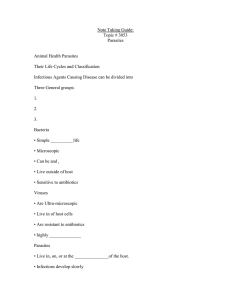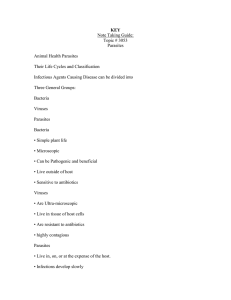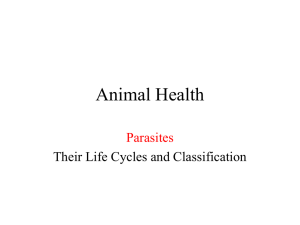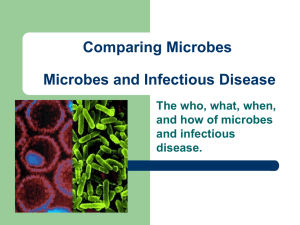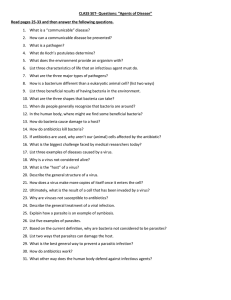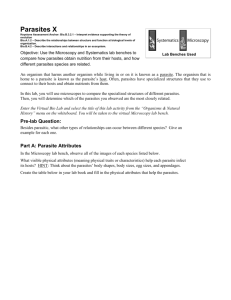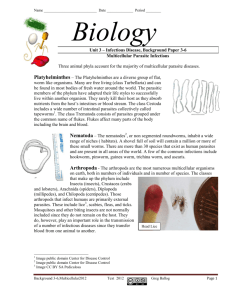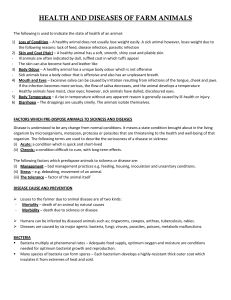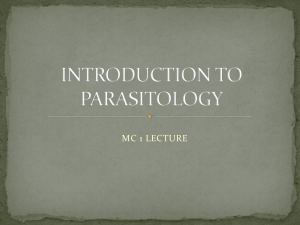Common illnesses Ashlee Gibson Topic #
advertisement
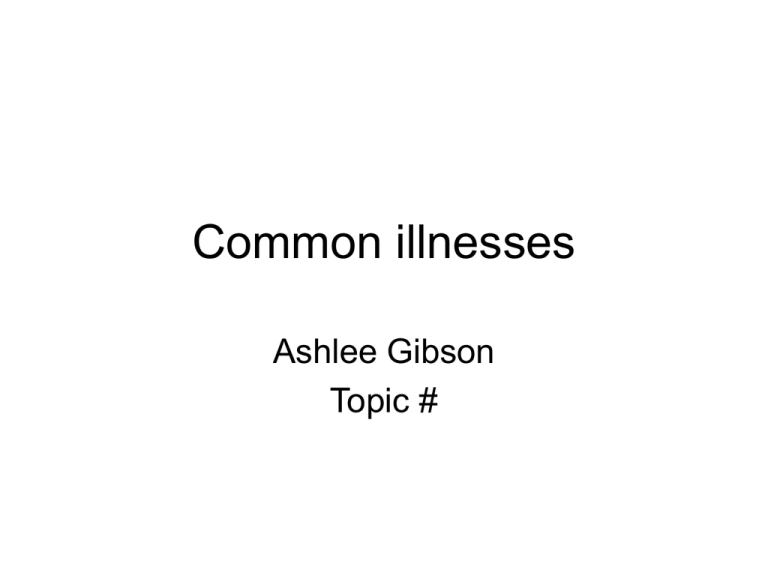
Common illnesses Ashlee Gibson Topic # Infectious Agents that Cause Disease • Bacteria • Virus • Parasite Bacteria • Are the most simple form of plant life. • Contain no chlorophyll (therefore need no sunlight for survival). • Are microscopic one-celled organisms that vary in size and shape. • Can be pathogenic and in other cases are beneficial to man (Common ones are used in the fermentation of vinegar and in cheese making.). • Generally live outside host cell. • Are sensitive to antibiotic drugs such as penicillin. Example of Bacteria Diseases Virus • Are ultra-microscopic. • Live within the tissue of host cells and therefore, cannot be killed with medications that circulate only in body fluids (unlike bacteria). • Are resistant to antibiotic drugs. • Most are highly contagious. Example Viral Diseases Parasites • Parasites are organisms living on, in or at the expense of the host. • Parasite infections develop slowly and are difficult to eradicate completely. • Animals do not develop immunity, to parasites, although some resistance is apparent between age groups. • Some animals do not show many symptoms, others may show symptoms such as dull hair coat, lethargic behavior and loss of weight. • Most parasites are host-specific (only live in certain types of animals). Parasites Continued (1) Cause tissue damage through migration and consumption. (2) Absorb nutrients from the host's g.i. tract (gastrointestinal system). (3) Suck blood or lymph from the hosts body. (4) Obstruct of passages. (5) Cause nodules or growths internally and externally. (6) Cause general irritation internally and externally. (7) Transmit other types of diseases to the host. (8) Open the body to secondary infection. Parasite Disease Example Non-infectious Disease Causing Agents • • • • Chemicals and poisons. Poor nutrition. Injuries. Physical stress found during breeding, conception, lactation and birth. • Any other kind of stress or trauma that weakening the animal and its immune system, making it more susceptible to other secondary infections.
